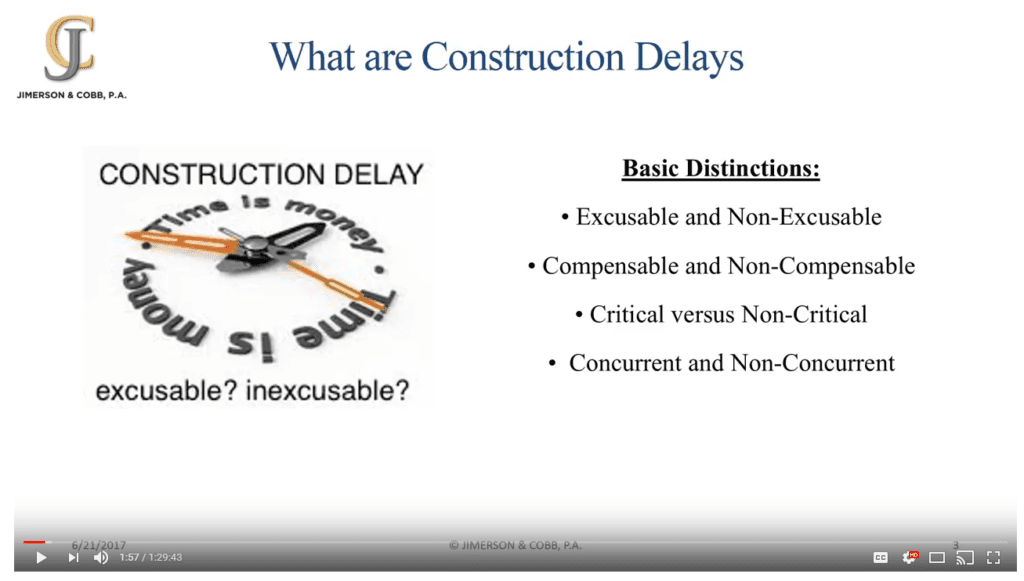Construction Delays: What They Are, Why it Matters & How to Measure Them
Reading Time: 3 minutes
Construction delays are incredibly costly for contractors and owners. Therefore, the best approach is planning ahead so you can avoid them, then being prepared to effectively manage them if they occur. In this video presentation recorded by Jimerson Birr attorney Austin B. Calhoun, there is an in-depth discussion that defines what are construction delays. Next, Austin explains why do delays matter to the parties involved. Then, he describes what is a CPM construction schedule, followed by how you can measure delays. Finally, he shares how you can calculate damages as a result of construction delays.
The presentation can be accessed by visiting YouTube or clicking play on the embedded image below. The length of the presentation is 1:29:43. In addition to the detailed content provided in the presentation video, there is a helpful checklist for delays, as well as hyperlinks list to other blog articles related to this topic.
Discussion On Types Of Construction Delays
Austin covers construction delay types including:
- Excusable and non-excusable;
- Compensable and non-compensable;
- Critical versus non-critical; and
- what are concurrent and non-concurrent.
As a result, you can better understand why these delays are pertinent and the importance of defining mechanisms for compensation based on delay type, ahead of time.
Discussion Of Why Delays Matter
- Increased interest rates and carrying costs
- Loss of income
- Increased overhead or additional costs
Discussion On What Is CPM Construction Schedule
Not following a well-planned construction schedule can spell disaster. However, preparing one that indicates the necessity of certain tasks ahead of others can help. Austin analyzes and explains examples of construction schedules including:
- what activities during what periods of time;
- the logic or relationships (finish-start, start-start, etc);
- the project duration;
- the project critical path
- float, and
- as-planned and as-built considerations.
How To Measure Delays
- Using contemporaneous analysis compares activity to activity
Discussion On Calculating Damages
- Liquidated damages (replaces “actual” damages)
- Total cost method (less reliable and many courts are critical of this approach)
- Modified total cost method (compromise between the total cost method and is more specific than the actual cost data)
- Jury verdict method (three elements are required prior to recovery)
Conclusion
Contractors who understand how construction delays can impact a project financially is one formula for success. You must carefully invest your time at the beginning in proper planning. But as a result, you will potentially have a much less stressful and more profitable business.






